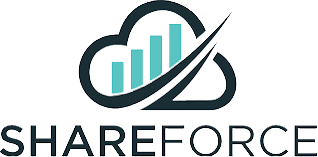Share Incentive plans can be powerful tools for companies to align the interests of their employees with the interests of their shareholders. There is, however, a significant amount of administrative work that goes into setting up and running these plans, as well as strict financial reporting requirements that are regulated by International Financial Reporting Standards (“IFRS”) (or U.S. GAAP, for companies domiciled in the United States). While this blog focuses on IFRS complexities, GAAP standards present similar challenges.
Read “Share-Based Payments: IFRS vs GAAP Comparison“
Traditionally, complying with the financial and reporting obligations for share plans (referred to as share-based payments under IFRS 2) has been notoriously cumbersome for those involved. This “task” is often associated with long hours and a significant amount of manual intervention by the Finance and Accounting teams to accurately report on IFRS 2 balances.
IFRS 2 – The challenge technology needs to tackle
For those companies that need to comply with IFRS reporting requirements, share-based payment transactions (such as granted shares, share options, or share appreciation rights) must be recognised and measured in their financial statements.
Despite the many accounting considerations that need to be addressed when dealing with share-based payments and IFRS 2, technology can significantly lighten the burden of this task.
So what makes complying with IFRS 2 so complex?
… the fair value
Share-based payments need to be recognised and measured in a company’s financial statements at fair value. Like financial derivatives, share incentive plans can be designed and structured from various terms and conditions that make valuing them complex. The fair value of a share incentive plan is determined using valuation techniques consistent with generally accepted valuation methodologies and incorporates all factors and assumptions that knowledgeable and willing market participants would apply.
… when to measure these transactions
Before issuing an incentive award, the issuing company must decide how it intends to settle these awards in the future, either in shares, cash, or a combination of the two. This choice is driven by the issuing company’s preference for purchasing shares, liquidity, or ownership objectives. However, this choice creates complexity for those responsible for accounting and reporting according to IFRS 2 standards that govern when these transactions must be measured (the measurement dates) to determine the equity reserve or liability related to the share-based payment expense.
… the number of awards that are expected to vest
Once the fair value of the equity instruments is calculated (at the measurement date), it is expensed on a straight-line basis over the vesting period and adjusted to reflect the number of awards that are expected to vest. Other than market conditions attached to equity instruments granted, vesting conditions are not considered within the fair value at the measurement date. Instead, the number of equity instruments are adjusted, outside the fair value, to reflect the number of equity instruments expected to vest.
… special cases and splitting the expense
Outside of recognising a straightforward IFRS 2 expense, certain “special case” events may lead to slight variations in calculating the expense. These include participants transferring between entities or cost centres within a group, leavers, or modifications to the terms of the share plan.
It is not uncommon for participants to move between subsidiaries or cost centres within the umbrella of a larger entity. If a participant transfers during a vesting period, it begs the question, “who needs to carry the cost and account for the expense of that award?”. In truth, there is no right or wrong answer, but common practice is to pro-rata the expense based on the service period spent in each of the subsidiaries.
Another complexity arises when a participant leaves a company. The company must decide how to treat the leaver’s awards by applying a set of rules, defined by the reason for leaving (usually categorised as “good-leavers”, “bad-leavers”, or “no-fault leavers”). Applying leaver rules may result in (i) early vesting of awards (accelerations), (ii) forfeiting of awards, or (iiI) have no impact at all. Applying the correct rule to the leave activity is paramount to capturing the expense.
Companies also need to consider the implications of corporate actions on share awards, which may require a modification to its terms. Not only can this result in a change to the fair value of the share awards at the time of such an event, but it may also require the number of awards granted to be adjusted. From an accounting perspective, a modification cannot result in a lower expense being recognised than the expense that arose from the original award.
Technology’s role in reducing the burden of measuring and reporting on share-based payments
Share plan administration and share plan accounting were historically managed by separate teams. Segregated processes meant that companies exposed themselves to considerable risks from mismatches between administration and accounting data. In contrast, technology integrates processes for multiple users across organisations, and cloud-based solutions enable divisions to access a single data source.
Technology takes a scientific approach to manage share plan accounting – every share award ‘action’ has an equally impactful accounting “reaction” – thereby allowing accounting teams to report on any administrative update in real-time, accurately.
IFRS 2 is no different from the majority of accounting standards, in that, for the most part, it is predominately a rule-based standard. These rules allow for software to automate complex calculations and the mind-numbingly repetitive tasks faced by accounting teams. Previously complex IFRS 2 valuations models, vesting percentage calculations, and forfeiture rate applications are significantly simplified using technology and automation.
Also read “How to Make Complying With IFRS 2 Easier For Share-Based Payments“
ShareForce
ShareForce offers a specialised incentive management software solution that simplifies complex share-based payment finance and accounting tasks.
The ShareForce platform uses cutting edge technology to account for your share-based payment expense for cash or equity-settled plans while maintaining 100% IFRS 2 compliance.
ShareForce can perform complex IFRS 2 calculations, dynamically and without error, in a fraction of the time it used to take. This includes the ability to generate audit-ready valuation, accounting and disclosure reports on the fly.
ShareForce uses cloud technology to enable various departments within a company to manage their share plan requirements using a single source of data, thereby improving efficiencies, reducing errors, and simplifying the complexities of an otherwise very complex process.
To view a demo of the ShareForce Incentive Plan management tool, fill in the form below or visit www.shareforce.net/contact



